Designed by famous Japanese architect Kengo Kuma, the Japan National Stadium set the stage for the delayed 2020 Summer Olympic and Paralympic Games. Hosting the magnificent opening and closing ceremonies, as well as athletics, rugby, and football games throughout the event, this 65-000 to the 80,000-capacity stadium is now open to the public for tours.
During the games themselves, the stadium was a lot quieter than it was originally hoped to be.
With Tokyo under a state of emergency due to the pandemic, no fans were allowed within any of the Olympic venues to witness the ceremonies or to watch the athletes compete.
Despite the empty seats, the stadium itself was a shining tribute to Japan in the modern age and took center stage for a global audience of more than three billion people.
Now you can take a tour inside the facility and see the breathtaking design for yourself.
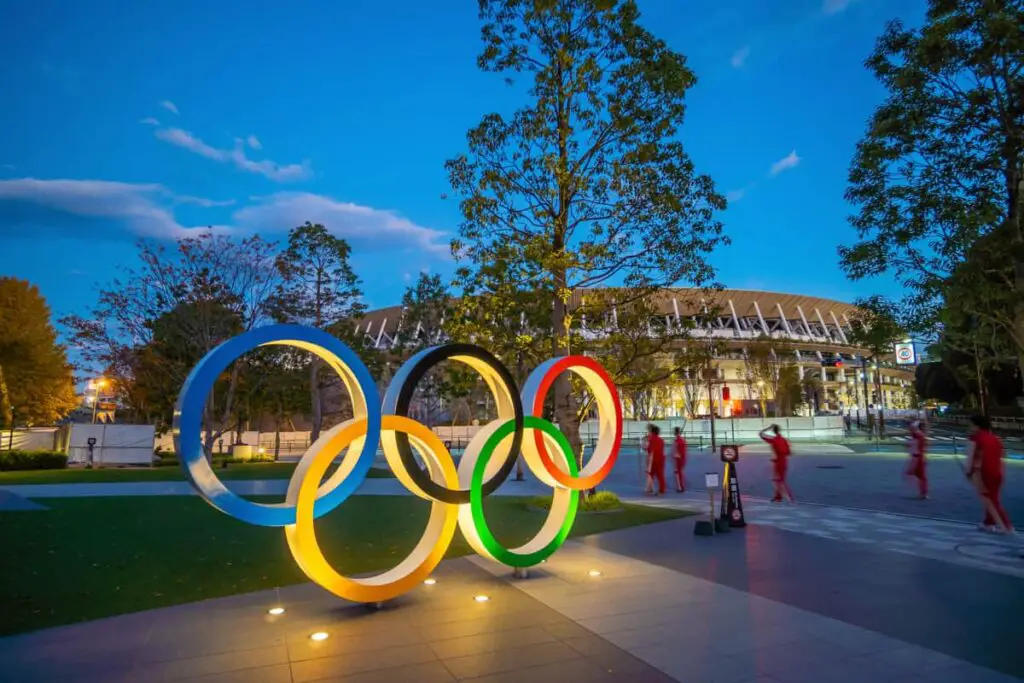
From the Past to the Future
The Japan National Stadium stands on the very same site as the original National Stadium where the opening and closing ceremonies for the 1964 Summer Olympics were also held.
From its first major event in 1958, the Asian Games, the original stadium hosted major concerts, world championships, and world cups and was a technological marvel in its own right when it was first constructed.
The original stadium was not without its problems, however. The original capacity allowed for less than 60,000 people within the stands and most of the spectators were not covered by any roofing, leaving them open to the wind and rain. Plans for a $1 billion renovation and reconstruction project were revealed in early 2012.
Originally the remodel was intended to be ready for the 2019 Rugby World Cup, but it wasn’t until 2015 that a deal was reached and Kengo Kuma was put in charge of the project as the lead architect.
With the budget capped at 155 billion yen ($1.28 billion), the reconstruction of the stadium would put it in the top 10 most expensive stadiums in the world.
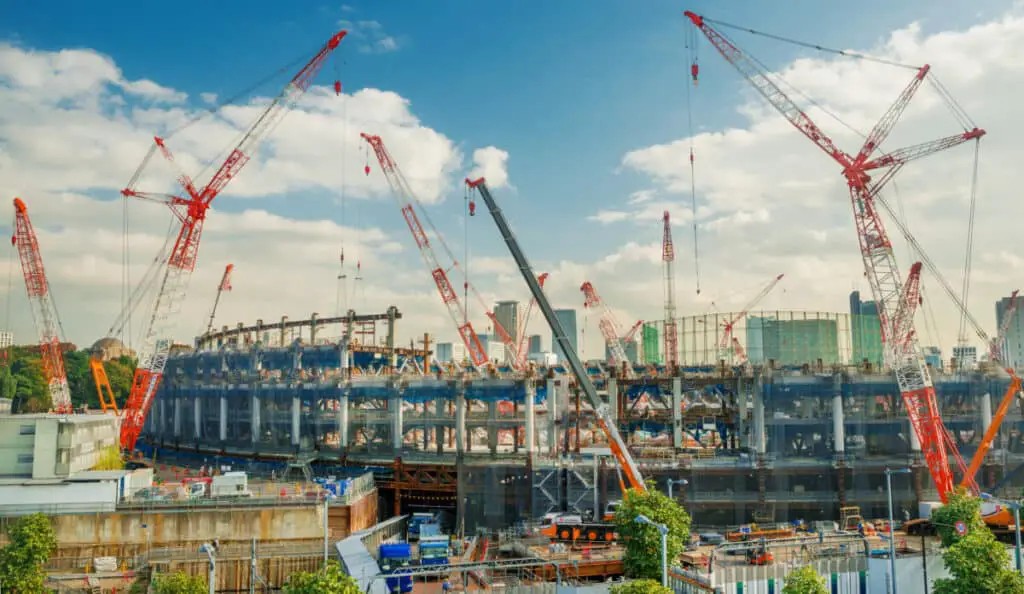
The high-tech design shows a vision for the future but also pays homage to Japan’s history. Alongside being built upon a historic location, and recalling Japan’s contributions to the global sporting world, Kuma incorporated traditional materials into the construction.
Unusual for a building of its size, the National Stadium uses timber as a major structural component, an important material in Japanese tradition.
Who Designed the New National Stadium?
Kengo Kuma is a Japanese architect and professor of Architecture at the University of Tokyo. He was born in Yokohama but now his influential designs can be seen throughout the world.
His architectural ethos is one of material craftsmanship, lightness, and a connection between the building and nature. All of these elements can be seen within the Japan National Stadium, which is a crowning achievement in his career.
In co-operation with Taisei Corporation and Azusa Sekkei Co, Kuma was selected for the project in 2015.
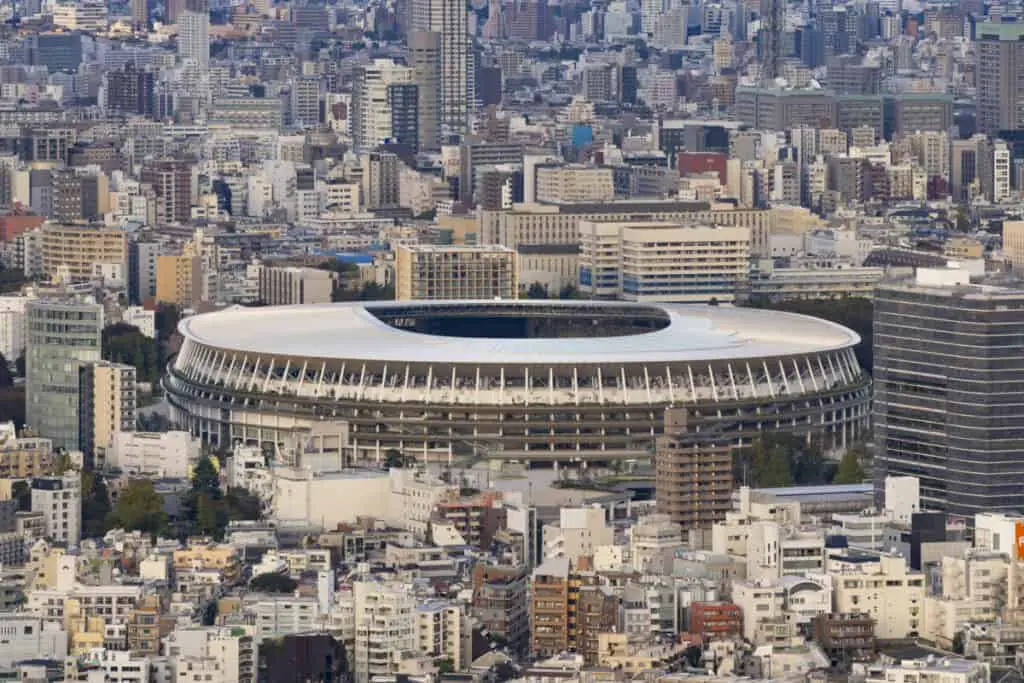
He is well known in Japan for famous buildings like the Suntory Museum of Art in Tokyo, the Nagasaki Prefectural Art Museum, and the Stone Roof residence in Nagano, where stone rises up from the ground to encapsulate the entire home.
Around the world, Kuma has designed the Great Wall House in China, the Besançon Art Center in France, one of the largest spas in the Caribbean, and even projects in the United States in Portland, Oregon, and Dallas, Texas.
He also created the Aluminium Cloud Pavilion, which is a pre-fabricated pavilion design that has been bought and constructed all around the world.
A Part of its Environment
Kuma went to great lengths to ensure that the stadium feels like a reflection of the world in which it was built. All of the timber used was sourced from within Japan itself, to reduce its ecological impact.
Forty-seven different types of wood were used, from each of the 47 prefectures that make up Japan. This was a tradition started in the construction of the Meiji Shrine.
To bring this wood together, Kuma utilized the craftsmanship of woodworking, carpentry, and joinery. As in much of his work, he used an ancient Japanese technique called Hell tenon Joints to weave cypress wood into a stable structure, without requiring columns to hold it up.
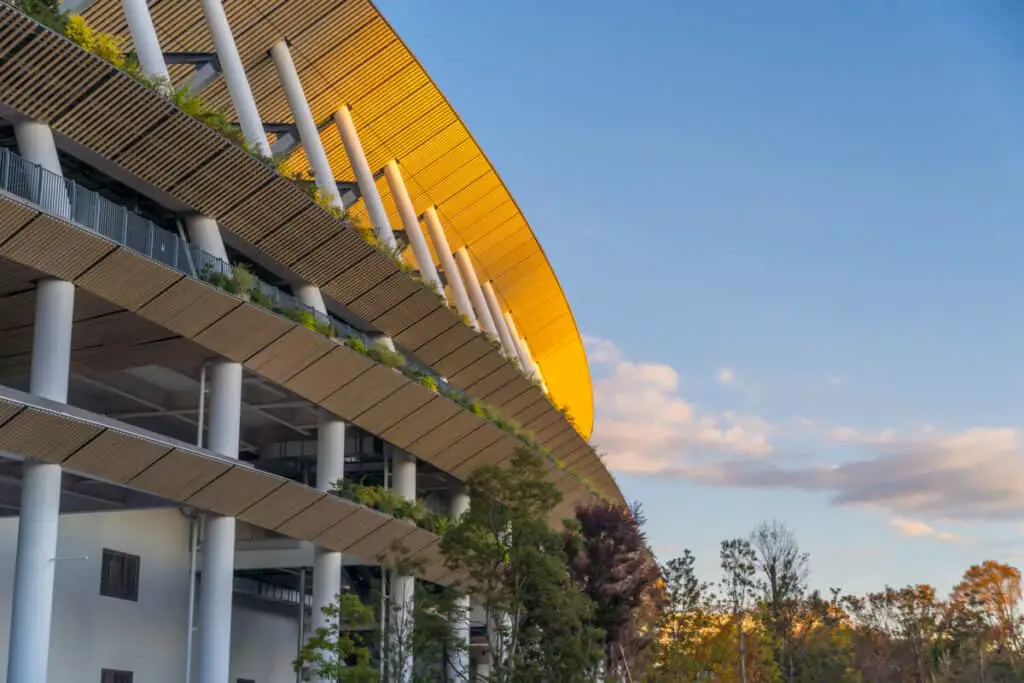
The National Stadium is also designed to encapsulate the feeling of Japan’s narrow streets, small wooden houses, and small wooden shops.
Despite its size, there is a sense of smallness and comfort within the structure. The overall design is softer, and a move away from the large, boxy feel of urban architecture.
Respect for the environment is evident throughout the construction. Instead of using air conditioning, the entire stadium is cooled by computer-optimized building techniques that allow natural wind to circulate through the eaves and via the copious greenery.
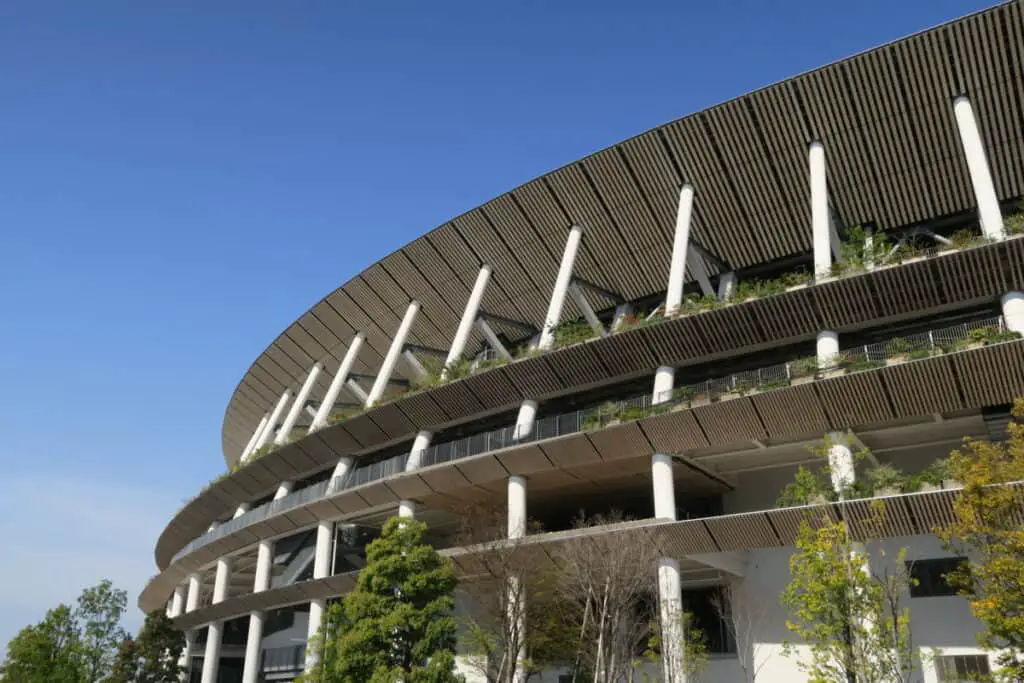
To further reduce its carbon footprint, part of the roof consists of solar panels, and rainwater is collected and used to water the grass and plants that surround the upper levels.
Empty Seats
The stadium is built to seat 68,000, with space for up to 80,000 for specific events, but during the 2020 Olympics and Paralympics, no audience members were allowed inside.
With Tokyo under a state of emergency because of the global pandemic, the concession stands were shuttered, the gates were quiet and only a few staff members were needed.
Even during the opening ceremony less than 1000 audience members, mainly foreign dignitaries and members of the International Olympic Committee, were in the seats.
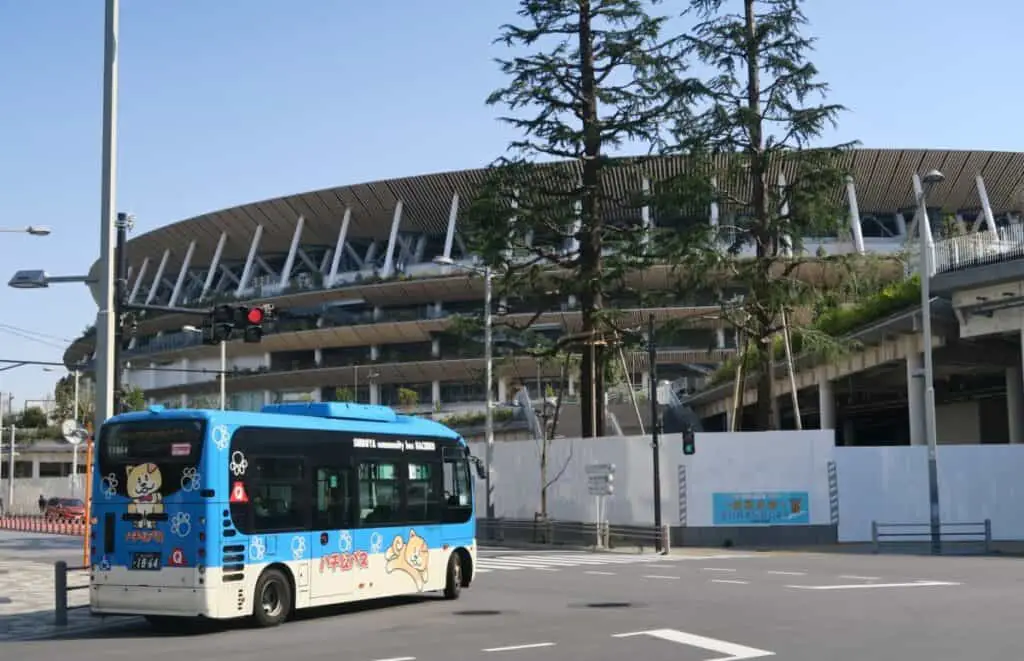
Throughout the course of the games the majority of the people inside the stadium, besides the athletes themselves, were workers, camera crews, and reporters.
While the building was designed to handle huge crowds, with robots on hand to help spectators to their seats and electronic signs overhead, it was also entirely empty.
All of the seats are in different colors, of white, green, and brown, to create an illusion that they were filled with people. During the events, a digital display read inspirational messages to the athletes missing an audience.
What Can I See at the Japan National Stadium?
The stadium is now under renovation, but while it is not being used for major events, you can now take a tour of the facility to see the magnificent structure up close.
Opening on Sundays and national holidays from late 2021, visitors are able to walk through the northern section of the stadium and see the beautiful wooden eaves and colored seating from the fourth floor.
Visitors will have access to a great range of photo opportunities, such as standing on a medal ceremony podium just like the victorious competitors themselves.
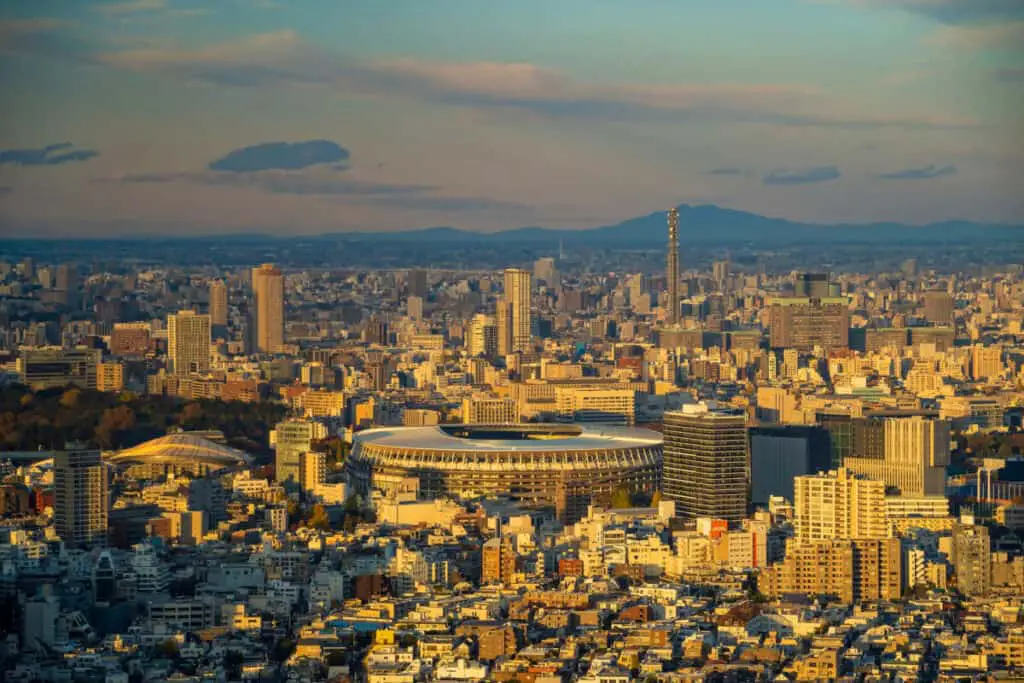
You can sit in the very seats that were sadly closed to the public throughout the games.
Admission is every 30 minutes from 09:00 to 16:00 and tickets must be reserved 5 days in advance of entry. The cost is ¥1,000 for general admission, ¥500 for high school students and younger, and free for preschool children.
Even from the outside, the stadium is well worth a visit. The cedar eaves extend outwards and overhang the external circulation areas.
Some 47,000 plants can be seen surrounding each layer, which helps the building to blend into the green of its surroundings. You can see the Olympic Cauldron Memorial below the stadium itself and it is a short walk to the Japan Olympic Museum.
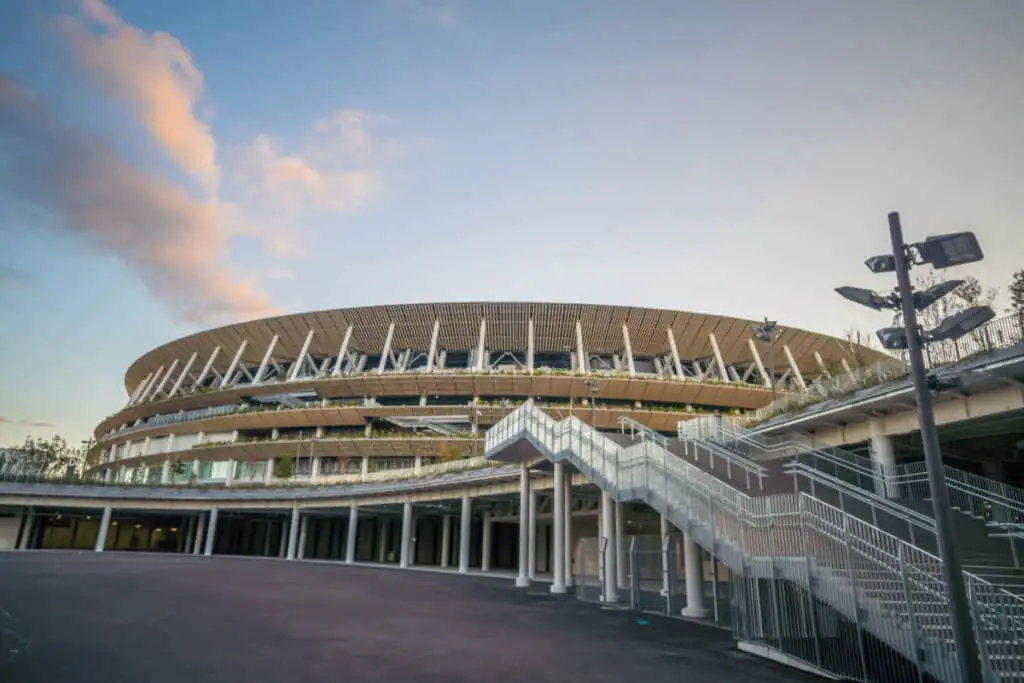
There are many other sights to see in the area as well. The Meiji Jingu Shinto shrine and surrounding seasonal gardens are less than twenty minutes away on foot, as is the Shinjuku Gyoen National Garden with 144 acres to explore.
There are also several art galleries to visit, such as the Design Festa Gallery and the Watarium Art Museum.
How Do I Get to the Stadium?
National Stadium Official Website
The easiest way to access the Japan National Stadium is via public transport. It is one minute’s walk from Kokuritsu-Kyogijo Station on the Toei-Oedo Subway line or five minutes from Sendagaya Station on the Chuo-Sobu line.
If you’re traveling on the Ginza line, Gaienmae Station is a 15-minute walk away.
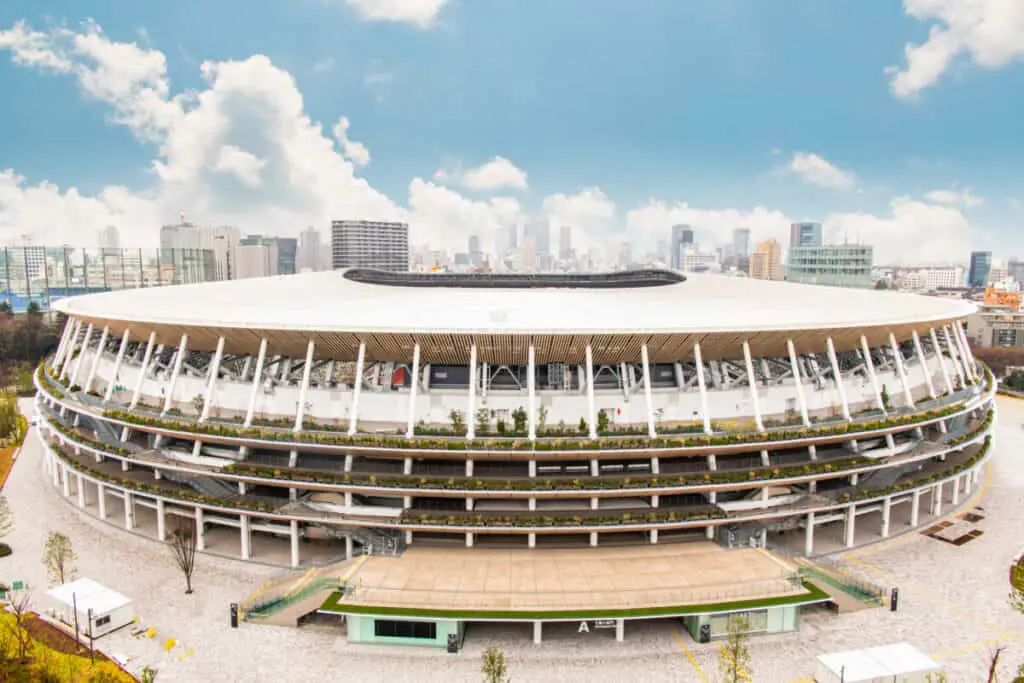
The Meiji-Kōen and Sendagaya Station bus stops are also just outside of the stadium, and both the Haya 81 and Early 77 buses will take you there. These are both run by Toei Bus and will cost ¥210 for an adult fare or ¥105 for a child.
You can pay with cash, a PASMO card, or use a One-Day Economy Pass.
National Stadium Tokyo Location Via Google Maps
Traffic around the area can be quite heavy so driving is not recommended, but there are some parking facilities around Shinanomachi Station.










